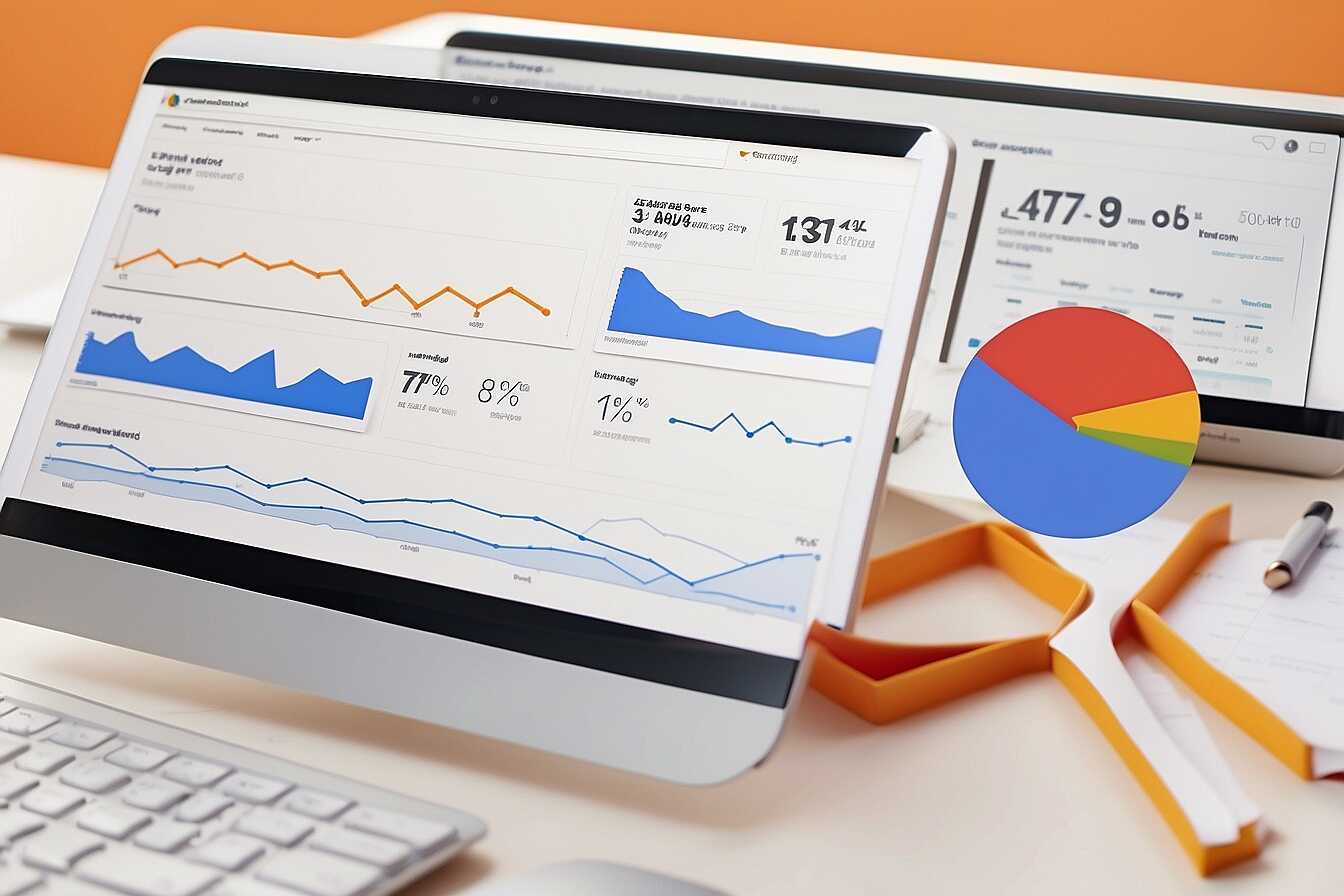Understanding how to prioritize and get important pages indexed first is crucial for effective SEO. By focusing on crawl prioritization, website owners can significantly improve their visibility and ranking in search engines. At Metrics Rule, we emphasize the importance of optimizing website structure and leveraging technical strategies to enhance indexing efficiency. Implementing these techniques not only ensures that vital content gets indexed sooner, but also helps in achieving better overall performance in search results.
Defining Crawl Prioritization and Its Importance
Crawl prioritization in SEO refers to the process of deciding which web pages search engines should index first. This is crucial because search engines like Google can only process a finite number of pages at a time. Therefore, proper prioritization ensures that your most essential pages, which drive traffic and conversions, are indexed quickly and efficiently. By implementing effective SEO strategies such as optimizing your site’s structure and using sitemaps, you can improve indexing efficiency and ensure that critical content doesn’t get overlooked. In essence, prioritizing pages correctly increases the likelihood that they will rank well and be visible to users searching for your services.
Strategies for Ensuring Effective Crawl Prioritization
To ensure effective crawl prioritization, website owners should focus on several key strategies. Start by organizing your site’s structure logically, enabling search engines to easily navigate between pages. Utilize XML sitemaps to guide bots directly to your vital content. Pay attention to your site’s load speed, as faster sites improve the chances of getting indexed more promptly. Additionally, maintain an updated robots.txt file to allow bots to focus on important sections. Regularly review your website’s analytics to identify which pages generate the best engagement. By employing these strategies, you enhance your site’s ability to ensure essential pages are indexed first, leading to better visibility and performance in search results.
Factors Influencing Search Engine Crawling Decisions
Search engines like Google and Bing consider multiple factors when deciding which pages to crawl first. Key factors include the reliability of the site, the design of the site structure, and the presence of strong content signals. A well-optimized site structure ensures that search engines can navigate the website easily, improving the chances that important pages are indexed faster. Content signals, such as keyword relevance and freshness, help search engines assess which pages offer the most value, increasing their indexing priority.
Optimizing Site Structure for Improved Crawling
To enhance the likelihood of efficient crawling, prioritize your site structure’s design. Ensure important pages are accessible within just a few clicks from the homepage, reducing the depth of navigation. This structure enhances both user experience and crawling efficiency. Using an XML sitemap is also essential; it acts like a roadmap, guiding search engines to your most important pages. It’s proven that websites with well-defined structures have better indexing rates. In your sitemap, highlight essential content that significantly boosts your SEO performance. Incorporate relevant keywords within your URLs and titles to further improve indexing chances.

Identifying Common URL Indexing Pitfalls
Recognizing common mistakes that hinder URL indexing can significantly enhance your website’s crawlability. Issues such as incorrect sitemap configuration can prevent search engines from discovering essential pages. Mismanaged robots.txt files may inadvertently block important URLs from being crawled. Additionally, faulty HTTP status codes, like 404 or 500 errors, can disrupt indexing efforts. Understanding these pitfalls helps ensure that important pages are prioritized and indexed effectively. According to various studies, about 30% of websites may face indexing issues due to these common mistakes, underscoring the importance of meticulous website management.
Key Factors Impacting URL Indexing Success
Several key factors directly impact URL indexing success. First, an optimized sitemap configuration is crucial for listing all important pages for search engines. Make sure to include all canonical URLs in your sitemap to help search engines prioritize them. Secondly, the configuration of your robots.txt file plays a significant role; incorrect settings can block critical pages from indexing. Lastly, monitoring HTTP status codes is essential. Ensure all URLs return a proper 200 response to maintain indexing efficiency. By focusing on these areas, website owners can enhance their indexing reliability and overall SEO performance.
Numerical Insights on Page Indexing
- Search engines may crawl 1,000 pages per site daily.
- Approximately 70% of users ignore paid search results.
- Only 10% of all indexed pages receive traffic.
- Up to 35% of search visibility comes from the top 3 results.
- Pages can take 4-6 weeks to index fully after creation.
- Using a sitemap can increase the chance of pages being indexed by 40%.
- About 60% of website problems prevent proper indexing.

Effective Techniques for Rapid Page Indexing
To ensure that important web pages are indexed quickly by search engines, you can utilize several proven methods. First, submit your sitemap to Google Search Console and Bing Webmaster Tools; this encourages faster indexing. Additionally, internal linking is essential; linking to important pages from other content enhances crawlability. You can also use tools like Fetch as Google, which allows you to test how Google crawls and indexes your site, providing immediate insights. Other effective strategies include creating valuable content that attracts backlinks, as the more reputable sites linking to you, the faster your pages are likely to be indexed.
Utilizing Effective Tools and Services for Speedy Indexing
Several tools and platforms can increase the speed and reliability of indexing important pages. Google Search Console is vital for submitting sitemaps, monitoring index status, and identifying crawl issues. Another useful tool is SEMrush, which provides insights into on-page SEO and helps identify any problems preventing efficient crawling. Additionally, employing AI-powered services can help automate the creation of sitemaps and improve the quality of your content, which in turn enhances indexing speed. For best results, combining these tools with regular monitoring and testing will ensure your pages are indexed as quickly as possible.

How XML Sitemaps Enhance Indexing Efficiency
XML sitemaps play a crucial role in helping search engines like Google and Bing efficiently crawl and index your website. These files provide a blueprint of your site’s content, ensuring that search engines discover important pages quickly. By following best practices, including using the correct formats and regularly updating your sitemap, you can significantly enhance crawl efficiency. A well-structured XML sitemap can also include metadata about each URL, such as last modified dates and priority levels, thereby improving visibility during the indexing process.
Best Practices for Creating and Submitting XML Sitemaps
To create and submit effective XML sitemaps, focus on including all essential pages of your website. Ensure that your sitemap adheres to the standards set by search engines for maximum compatibility. For example, limit each sitemap to 50,000 URLs or a size of 50 MB, whichever comes first, to avoid indexing issues. Additionally, submit your sitemap to Google Search Console and Bing Webmaster Tools to promote crawl efficiency. Regularly review and update your sitemap to reflect new content and remove outdated URLs, enhancing overall visibility in search results.
Advantages of Effective Page Indexing
- Boosts your site’s overall search engine visibility.
- Enhances user experience by displaying relevant content quickly.
- Improves conversion rates through better-targeted pages.
- Allows quicker updates to important and new content.
- Facilitates more comprehensive site audits and SEO strategies.
- Increases organic traffic by attracting the right audience.
- Enhances crawl prioritization for critical pages to rank better.

Optimizing High-Priority Content for Better Search Visibility
To improve the visibility of your high-priority content during indexing, focus on content optimization, metadata enhancement, and improving crawl efficiency. Start by ensuring that your content is high-quality and addresses user intent effectively. Incorporate relevant keywords to boost relevancy. Use structured data, such as schema markup, to help search engines understand your content better. Tools like Google Search Console can help analyze your indexing status, while optimizing your sitemap ensures your essential pages are prioritized for crawling. Regularly monitor your site’s performance through analytics to adapt your strategy as needed.
Essential Elements for Optimizing High-Priority Pages
When optimizing high-priority pages, focus on key elements such as title tags, meta descriptions, and header tags. Title tags should be concise yet descriptive, containing primary keywords towards the start. Meta descriptions need to effectively summarize page content and encourage click-throughs, so make them compelling and relevant. Use header tags (H1, H2, H3) to structure your content for both readability and SEO. Integrate relevant images with alt text to enhance user experience and boost SEO. Regularly testing these elements can lead to a 20% improvement in visibility for high-priority pages.
Using Robots.txt and Meta Tags to Influence Crawling
Robots.txt files and meta tags play crucial roles in influencing how search engines crawl and index your website. By utilizing a robots.txt file, you can block search engine crawlers from accessing specific parts of your site, ensuring that they focus on your important pages first. It’s essential to implement this file correctly to prevent unintended issues. Common meta tags, such as the “noindex” tag, provide further control, allowing you to specify which pages should not appear in search results. Prioritizing the indexing of high-value pages is one of the best strategies to enhance your overall SEO performance. Effective management can involve specifying rules in your robots.txt for dozens to hundreds of pages.
Maximizing the Impact of Robots.txt and Meta Tags
To maximize the impact of your robots.txt and meta tags, you need a clear strategy. Start by analyzing your website’s structure and identifying pages that serve essential functions, such as conversion or user engagement. Utilize the robots.txt file to restrict access to low-quality content or duplicate pages that could dilute your site’s SEO value. Employ meta tags strategically by applying “noindex” to pages like thank-you pages or other non-valuable content. This approach enhances the efficiency of your crawling process, allowing search engines like Google and Bing to focus on the most impactful content. Regular testing and reviewing of these files can lead to improved indexing performance and better site visibility to your target audience.
Target Audiences for Indexing Strategies
- Small business owners often prioritize local SEO for visibility.
- E-commerce sites aim to index product pages swiftly for sales.
- Bloggers focus on content that engages readers and builds traffic.
- Content marketers look to improve brand awareness through SEO.
- Agencies may manage multiple client sites needing optimization.
- Nonprofits use indexing to increase outreach and engagement.
- Tech startups leverage SEO to capture their niche audience effectively.
Monitoring Crawl Behavior and Log Files for Continuous Improvement
Monitoring crawl behavior is essential for SEO improvement as it helps identify how search engines interact with your website. By analyzing log files, you can enhance indexing efficiency for various pages, ensuring that your most important content receives the attention it deserves. This practice provides insights into crawl errors, redirects, and overall site performance. In fact, log file analysis can reveal up to 30% of crawl errors, allowing you to act quickly. Continuous review and testing of this data can help SEO professionals and website owners optimize their SEO strategies systematically.
Effective Techniques for Log File Analysis
Log file analysis is a powerful tool for SEO specialists aiming to improve crawl efficiency. This process involves reviewing server logs to track how search engines navigate your site. By identifying which pages are crawled frequently, you can focus on optimizing those that aren’t being crawled enough. Tools designed for log analysis can provide detailed reports on error rates and the status of various pages on your site. This data enhances your understanding of search engine behavior, enabling you to refine sitemaps or adjust the robots.txt file for better indexing results.
